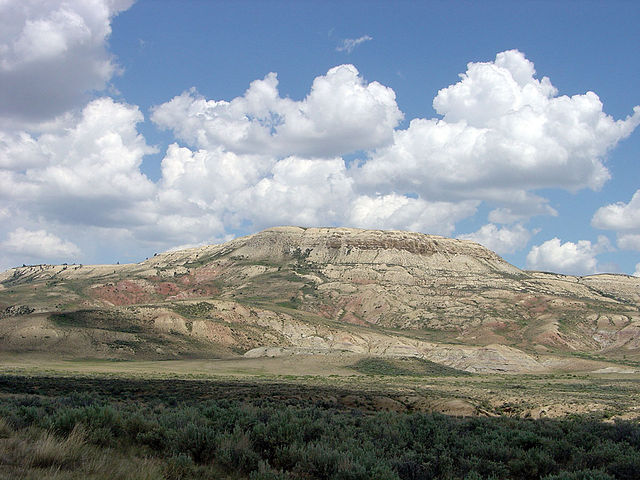The Wasatch Formation (Tw) is an extensive highly fossiliferous geologic formation stretching across several basins in Idaho, Montana Wyoming, Utah and western Colorado. It preserves fossils dating back to the Early Eocene period. The formation defines the Wasatchian or Lostcabinian, a period of time used within the NALMA classification, but the formation ranges in age from the Clarkforkian to Bridgerian.
Clinker-bed breccia from the Wasatch Formation (Wyoming)
View of Fossil Butte with the Wasatch Formation outcropping in the lower areas
Fossil Butte National Monument
Fossil Butte National Monument is a United States National Monument managed by the National Park Service, located 15 miles (24 km) west of Kemmerer, Wyoming, United States. It centers on an assemblage of Eocene Epoch animal and plant fossils associated with Fossil Lake—the smallest lake of the three great lakes which were then present in what are now Wyoming, Utah, and Colorado. The other two lakes were Lake Gosiute and Lake Uinta. Fossil Butte National Monument was established as a national monument on October 23, 1972.
Fossil Butte National Monument
Heliobatis radians, an extinct stingray, had small teeth for crushing snails and other mollusks and barbed spines on the tail for defense. This specimen is about 35 centimetres (14 in) long, including the tail.
This 1.7-meter (5 foot 6 inch) Axestemys byssinus is one of the largest turtles known from Fossil Lake.
Stingray prepared by R. Lee Craig (Asterotrygon maloneyi). In the collection of Fossil Shack. Prepared circa 1920.






